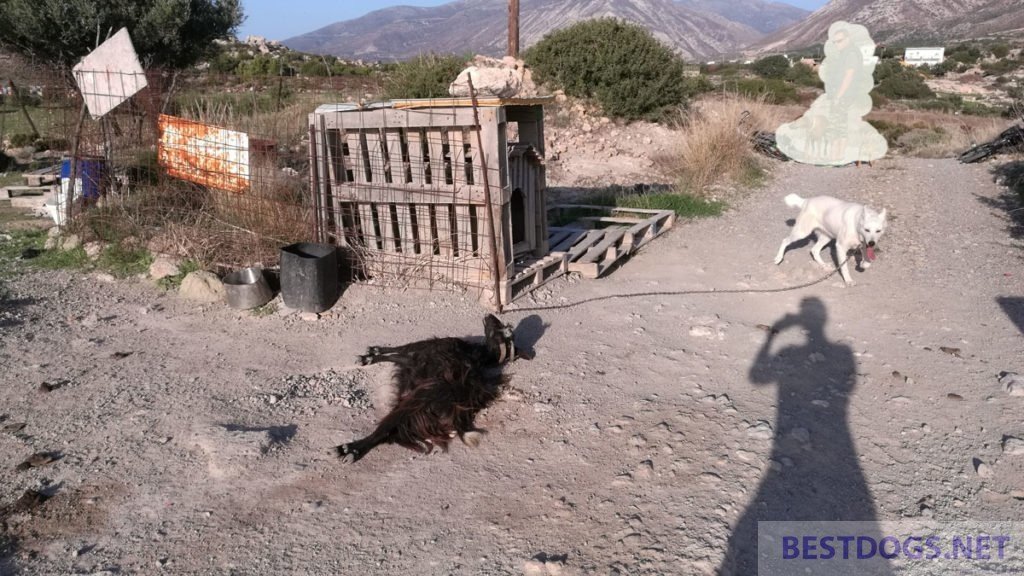Animal Hoarding: Understanding the Psychology and Impact on Welfare.

Animal Hoarding: Understanding the Psychology and Impact on Welfare
Table of Contents
Animal hoarding is a complex and often misunderstood condition where an individual keeps an excessive number of animals without proper housing, nutrition, sanitation, and veterinary care. This issue stems from a person’s inability to recognize the detrimental effects of hoarding on the welfare of the animals, themselves, and their community. It’s not merely an overabundance of pets; it is indicative of a hoarding disorder, which may also be associated with severe health risks to both humans and animals.
Typically, animal hoarding is driven by a compulsion to collect and control animals, which overrides the ability to comprehend the harsh realities of the animals’ living conditions. Individuals affected by this disorder may believe they are helping or saving their animals, even as the situation spirals into neglect. The recognition and understanding of animal hoarding have grown, prompting responses from animal welfare organizations, mental health professionals, and legal authorities.
The challenges of animal hoarding extend beyond the individual to the broader community, involving health risks, neighborhood safety, and resource allocation for animal care and rescue.
Understanding Animal Hoarding

Animal hoarding is a complex and misunderstood issue that intertwines concerns of mental health, animal welfare, and public safety. This section unpacks the different facets of animal hoarding, examining its definition, the psychological profile of hoarders, and the demographics and social factors involved.
Defining Animal Hoarding
Animal hoarding is characterized by an individual acquiring an excessive number of animals, combined with an inability to provide for their basic needs such as nutrition, sanitation, and veterinary care. This definition is grounded in findings by the Hoarding of Animals Research Consortium and echoes the concerns of animal welfare organizations. The environments in which hoarded animals live are often severely overcrowded and unsanitary, which can lead to illness and distress among the animals.
Psychology of Hoarders
The psychological underpinnings of animal hoarding can stem from several disorders. Although not exclusively classified as a distinct mental disorder by the American Psychiatric Association, it often displays characteristics akin to obsessive-compulsive disorder (OCD). Trauma and attachment issues might also contribute to this behavior, leading individuals to compulsively collect animals in an attempt to alleviate distress or loneliness.
Demographics and Social Factors
Typically, data has pointed to certain demographics associated with animal hoarding. A majority of hoarders are believed to be women, especially those who are older, single, widowed, or divorced. While hoarding can occur across various age groups, societal factors such as isolation and past trauma can be significant contributors to the behavior. The multifaceted nature of animal hoarding calls for a nuanced approach that addresses both the welfare of the animals and the health of the hoarder.
Consequences of Animal Hoarding

Animal hoarding severely affects the health and welfare of animals, undermines sanitation within the living environment, and can disrupt community health and safety. These conditions often lead to animal sufferings such as neglect, starvation, and disease.
Impact on Animal Welfare
In cases of animal hoarding, a person’s ability to provide adequate care for their animals is vastly overwhelmed. Animals may live in cramped conditions, commonly in cages or enclosures piled upon one another. This leads to a lack of proper nutrition, veterinary care, and socialization, causing widespread suffering and neglect. It is common to find animals in various states of health distress, with some being emaciated due to starvation or dehydration.
Health Risks and Sanitation Issues
The health risks associated with animal hoarding affect both the animals and humans living in or near such environments. Homes are often found to be unsanitary, filled with feces and urine, leading to a propagation of disease and a haven for pests. The neglect of animals’ basic needs also results in severe sanitation issues, posing significant public health concerns.
Effects on the Community
Animal hoarding not only impacts the welfare of animals but also the surrounding community. Accumulation of animals beyond one’s means contributes to severe animal cruelty cases and can result in death due to dire conditions. Communities are affected as hoarding can attract rodents and insects, which may spread disease. It also overwhelms local animal shelters and welfare agencies, which must intervene and address these complex animal welfare and public health scenarios.
Legal Framework and Enforcement

Effective enforcement of animal hoarding regulations necessitates a comprehensive understanding of the legal framework and the pivotal roles played by animal control and law enforcement. It also requires insight into how courts can intervene in hoarding cases to protect animal welfare and address the hoarder’s conduct.
Laws and Regulations
Animal hoarding is often regulated under animal cruelty laws, which vary by jurisdiction but generally prohibit the neglect, abuse, or mistreatment of animals. Many U.S. states have enacted specific provisions that address hoarding, defining it as having more animals than can be properly cared for. Housing and community ordinances may also limit the number of animals allowed on a property, providing a legal mechanism to address hoarding situations.
Role of Animal Control and Law Enforcement
Animal control officers and humane law enforcement agents are typically at the forefront of investigating potential hoarding situations. They have the authority to inspect properties, seize animals in distress, and collaborate with social service agencies. Law enforcement can enforce anti-hoarding laws, ensuring the society’s safety and the welfare of the animals involved. Their involvement is crucial in documenting the conditions and building a case for potential prosecution.
Court Interventions and Orders
When animal hoarding cases are brought forth, courts have the authority to issue various orders. These may include orders to remove animals from the premises, prohibit the hoarder from owning animals in the future, and mandate mental health evaluations or treatment for the hoarder. Courts rely on evidence provided by animal control and law enforcement to make informed decisions that support animal welfare law and protect the community.
Managing and Treating Animal Hoarding

Effective management and treatment of animal hoarding involve a multifaceted approach, addressing both human and animal welfare. Interventions must be both compassionate and judicious to ensure the safety of the animals and provide necessary support to the hoarders.
Interventions and Support for Hoarders
Intervention strategies often begin with agencies such as the humane society recognizing signs of hoarding and initiating a response. Support for hoarders is critical; without it, they face an increased risk of recidivism. Therapists and social services can provide mental health support while specific agencies work on rehoming animals to ensure their adequate care.
Veterinary and Rescue Operations
Animal rescue operations are tasked with assessing the health and safety of the animals involved. Veterinary teams play a crucial role by conducting health checks and initiating any necessary medical treatment. The goal is to restore the animals to good health so that they can be placed in new, nurturing environments.
Strategies to Prevent Recidivism
Recidivism rates are high in animal hoarding cases, with individuals often relapsing without proper long-term support. Preventative strategies include ongoing therapy, regular follow-ups by welfare agencies, and community education on the implications of hoarding. Such measures are essential to ensure sustained animal welfare and the psychological well-being of the hoarder.
Advocacy and Future Actions

Advocacy and action on animal hoarding are vital to improve animal welfare and public health. These efforts require coordinated approaches across various sectors of society, including local communities, educational institutions, and legal systems, to create sustainable change.
Raising Awareness and Community Involvement
Community awareness is essential in identifying animal hoarding and initiating action. The Animal Humane Society assists with this by educating the public on the signs of hoarding and offering guidance on how to help. In Illinois (U.S.A.), involving local communities can foster a supportive environment for individuals to seek help and for animals to receive adequate care.
Local animal shelters play a crucial role, working tirelessly to care for rescued animals and advocate for their welfare. For instance, in Hawaii, community involvement has led to increased socialization and support for animals rescued from hoarding situations.
Research and Educational Efforts
Continued research is needed to fully understand animal hoarding. This knowledge can then be integrated into educational programs. Researchers estimate the number of animals affected by hoarding yearly and evaluate the efficacy of interventions. By doing so, they become a source of valuable information for institutions such as the ASPCA and RSPCA, shaping policies and educational content aimed at prevention and resolution.
Strengthening Social and Legal Support Systems
Strengthening support systems involves improving legal responses and social services.
The ASPCA emphasizes the necessity of adequate legal frameworks to address the welfare and public safety issues raised by animal hoarding.
Stronger legislation, particularly in states like Illinois and Hawaii, can ensure animal hoarders are given the help they need while ensuring animal safety.
Support systems also mean providing mental health assistance to hoarders, alongside the rescue and rehabilitation of affected animals.
This dual approach minimizes the chances of recidivism and ensures the well-being of both animals and individuals involved.
Frequently Asked Questions
This section addresses some of the most common inquiries surrounding animal hoarding, providing factual insights into the indicators, psychological associations, types, legal consequences, and health implications of this complex issue.
What are early indicators that someone may be engaging in animal hoarding?
Early indications of animal hoarding include accumulating a large number of animals and failing to provide basic care like adequate food, shelter, and veterinary treatment.
The living environment often deteriorates due to overcrowding, which is a significant sign of this condition.
How does animal hoarding correlate with borderline personality disorder?
Animal hoarding has been associated with several psychological issues, including borderline personality disorder.
This correlation is observable in the hoarder’s unstable relationships, self-image, and emotions which may contribute to their compulsive care-taking behavior, despite the inability to provide adequate care.
Can you categorize different types of animal hoarders?
Yes, animal hoarders can be categorized into different types, such as the overwhelmed caregiver, the rescuer hoarder, and the exploiter hoarder.
Each type has distinct motivations and behavioral patterns ranging from a desire to help animals to taking advantage of them for personal gain.
What are the legal repercussions for animal hoarding in various jurisdictions?
The legal repercussions for animal hoarding vary by jurisdiction, but they can include fines, animal forfeiture, and in severe cases, jail time.
Some regions also mandate psychological evaluation or counseling as part of the sentencing.
What potential health concerns arise from animal hoarding for both humans and animals?
Animal hoarding can lead to severe health risks for humans, such as respiratory problems and zoonotic diseases.
The animals often suffer from malnutrition, stress, and injuries due to unsanitary and overcrowded living conditions.
In what ways is animal hoarding considered a psychological issue?
Animal hoarding is considered a psychological issue due to the hoarder’s persistent difficulty discarding or parting with animals, leading to extreme accumulation that prevents proper care.
It reflects underlying mental health disorders, such as obsessive-compulsive disorder or attachment disorders.




